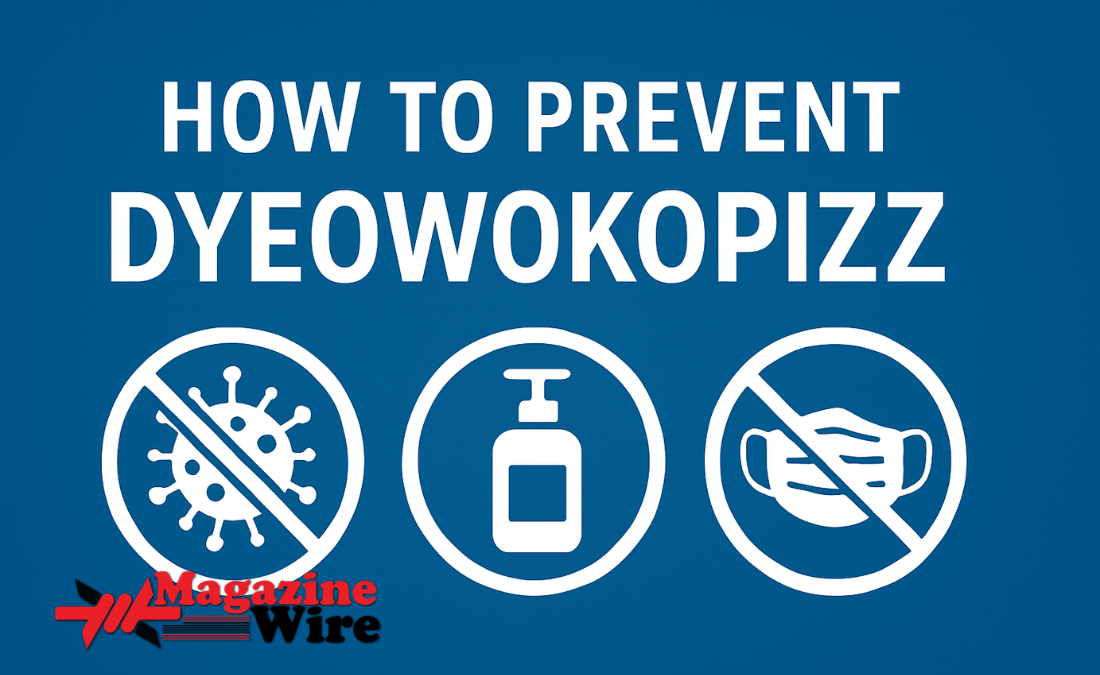Introduction to How to Prevent Dyeowokopizz
When people come across the phrase “How to Prevent Dyeowokopizz”, they might feel puzzled. The term Dyeowokopizz is not something found in everyday vocabulary. In this article, we will treat Dyeowokopizz as a hypothetical or niche condition, issue, or risk that one might encounter in specific situations—whether related to health, technology, lifestyle, or even environmental concerns. Our aim is to break down practical steps and preventive strategies so you can confidently address this challenge before it becomes a problem.
Understanding What Dyeowokopizz Means Before Learning How to Prevent Dyeowokopizz
Before diving into prevention, we first need to understand what Dyeowokopizz could represent. In many cases, when people look for how to prevent Dyeowokopizz, they might be referring to:
- A specialized health issue in a certain community
- A rare operational error in a technical or industrial setting
- A unique environmental or agricultural hazard
- A coined term for a recurring nuisance or disruption in personal life
By clarifying what Dyeowokopizz means in your specific context, you can better tailor the prevention strategies that follow.
Step 1 – Awareness as the First Step in How to Prevent Dyeowokopizz
Awareness is key. Without recognizing the potential signs or causes of Dyeowokopizz, prevention becomes almost impossible. Here’s how awareness plays a role:
- Observation: Keep track of patterns or early signs that could lead to Dyeowokopizz.
- Education: Learn about the known triggers and how they manifest.
- Documentation: Record any past occurrences to identify recurring factors.
For example, if Dyeowokopizz is a type of system failure, monitoring logs and reports might reveal patterns. If it’s a health concern, journaling symptoms can be vital.
Step 2 – Identifying Root Causes in How to Prevent Dyeowokopizz
Once awareness is in place, it’s important to find the root causes. Many people jump straight to solutions, but without addressing the origin, Dyeowokopizz can keep reappearing. Common root cause categories include:
- Environmental Factors: Temperature, humidity, or pollution levels.
- Human Error: Lack of training, incorrect procedures, or negligence.
- Material or Equipment Failure: Low-quality materials or outdated tools.
- Biological or Chemical Triggers: Contamination, allergens, or pathogens.
Identifying the root cause ensures your preventive measures target the right issue.

Step 3 – Lifestyle and Routine Adjustments for How to Prevent Dyeowokopizz
In many cases, Dyeowokopizz can be avoided by making simple, sustainable changes to daily routines. Examples include:
- Regular Maintenance: Whether it’s machinery, software, or personal health, consistent check-ups matter.
- Healthy Habits: Adequate rest, nutrition, and hydration can reduce risks in biological contexts.
- Organized Workflows: Clear processes reduce the likelihood of human error.
By building prevention into your lifestyle, you create resilience against Dyeowokopizz.
Step 4 – Protective Tools and Equipment in How to Prevent Dyeowokopizz
The right tools can make all the difference. If Dyeowokopizz is a workplace hazard, using safety gear or protective systems can prevent accidents. Some examples:
- Protective Clothing: Gloves, masks, or uniforms in health or chemical settings.
- Monitoring Devices: Sensors, alarms, or smart technology to detect risks early.
- Software Solutions: Security patches, backup systems, and automated alerts.
These investments are often more affordable than dealing with the consequences later.
Step 5 – Education and Training as a Core Part of How to Prevent Dyeowokopizz
If you are part of a team, group, or household that faces the possibility of Dyeowokopizz, collective knowledge is essential. Training programs should include:
- Clear Instructions: Step-by-step guides for preventing Dyeowokopizz.
- Emergency Drills: Practicing what to do if signs appear.
- Knowledge Sharing: Keeping everyone updated on new prevention methods.
Well-informed people are your first line of defense.
Step 6 – Regular Monitoring and Early Detection in How to Prevent Dyeowokopizz
Prevention is much more effective when combined with early detection. Set up a monitoring routine:
- Scheduled Inspections: Weekly or monthly checks depending on the context.
- Real-Time Alerts: Digital systems that notify you instantly of potential trouble.
- Self-Check Methods: Easy routines for individuals to assess their own situation.
By catching early warning signs, you can intervene before Dyeowokopizz escalates.
Step 7 – Building a Response Plan as Part of How to Prevent Dyeowokopizz
Even with strong prevention measures, having a backup plan is crucial. A well-structured response plan should include:
- Immediate Action Steps: What to do in the first minutes or hours.
- Containment Strategies: How to stop Dyeowokopizz from spreading or worsening.
- Recovery Protocols: Steps to return to normal operations or health after an incident.
This step ensures you’re prepared for all scenarios.
Step 8 – Continuous Improvement in How to Prevent Dyeowokopizz
Prevention is not a one-time task—it’s an ongoing process. Review your strategies regularly to:
- Evaluate Effectiveness: Measure how well your current methods work.
- Update Techniques: Incorporate new technology or research findings.
- Eliminate Weak Points: Fix any gaps or outdated practices.
Staying proactive keeps you ahead of potential risks.
Common Mistakes to Avoid in How to Prevent Dyeowokopizz
When working on prevention, certain errors can undo your hard work:
- Ignoring Early Signs: Small problems often grow into big ones.
- Using Incomplete Data: Prevention plans should be based on facts, not guesses.
- Cutting Corners: Short-term savings can lead to long-term losses.
- Lack of Communication: Failing to share information within a team or community.
Avoiding these mistakes can make your prevention strategy much stronger.
Conclusion – How to Prevent Dyeowokopizz the Right Way
Learning how to prevent Dyeowokopizz is about preparation, awareness, and consistent action. By understanding the possible causes, making lifestyle adjustments, investing in the right tools, educating yourself and others, and maintaining a clear monitoring system, you greatly reduce the likelihood of facing this challenge.
Prevention is always better than dealing with consequences, and by implementing the steps outlined here, you’ll be well-equipped to avoid Dyeowokopizz—whatever form it may take in your specific context.




